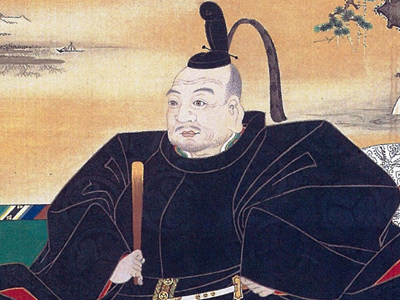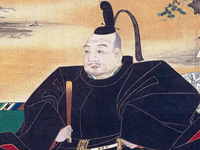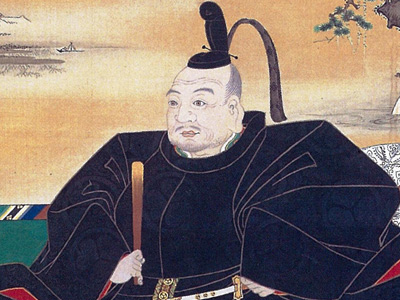Tokugawa Ieyasu (1543-1616)

The Sekigahara Campaign (1598–1603)
Hideyoshi, after three more months of increasing sickness, died on September 18, 1598. He was nominally succeeded by his young son Hideyori but as he was just five years old, real power was in the hands of the regents. Over the next two years Ieyasu made alliances with various daimyōs, especially those who had no love for Hideyoshi. Happily for Ieyasu, the oldest and most respected of the regents, Toshiie Maeda, died after just one year. With the death of Toshiie in 1599, Ieyasu led an army to Fushimi and took over Osaka Castle, the residence of Hideyori. This angered the three remaining regents and plans were made on all sides for war. It was also the last battle of one of the most loyal and powerful retainers of Ieyasu, Honda Tadakatsu.
Opposition to Ieyasu centered around Ishida Mitsunari, a powerful daimyō who was not one of the regents. Mitsunari plotted Ieyasu's death and news of this plot reached some of Ieyasu's generals. They attempted to kill Mitsunari but he fled and gained protection from none other than Ieyasu himself. It is not clear why Ieyasu protected a powerful enemy from his own men but Ieyasu was a master strategist and he may have concluded that he would be better off with Mitsunari leading the enemy army rather than one of the regents, who would have more legitimacy.
Nearly all of Japan's daimyōs and samurai now split into two factions—The Western Army (Mitsunari's group) and The Eastern Army (anti-Mitsunari Group). Ieyasu supported the anti-Mitsunari Group, and formed them as his potential allies. Ieyasu's allies were the Date clan, the Mogami clan, the Satake clan and the Maeda clan. Mitsunari allied himself with the three other regents: Ukita Hideie, Mōri Terumoto, and Uesugi Kagekatsu as well as many daimyō from the eastern end of Honshū.
In June 1600, Ieyasu and his allies moved their armies to defeat the Uesugi clan, which was accused of planning to revolt against Toyotomi administration. Before arriving at Uesugi's territory, Ieyasu received information that Mitsunari and his allies had moved their army against Ieyasu. Ieyasu held a meeting with the daimyōs, and they agreed to follow Ieyasu. He then led the majority of his army west towards Kyoto. In late summer, Ishida's forces captured Fushimi.
Ieyasu and his allies marched along the Tōkaidō, while his son Hidetada went along the Nakasendō with 38,000 soldiers. A battle against Sanada Masayuki in Shinano Province delayed Hidetada's forces, and they did not arrive in time for the main battle.
This battle, fought near Sekigahara, was the biggest and one of the most important battles in Japanese feudal history. It began on October 21, 1600, with a total of 160,000 men facing each other. The Battle of Sekigahara ended with a complete Tokugawa victory. The Western bloc was crushed and over the next few days Ishida Mitsunari and many other western nobles were captured and killed. Tokugawa Ieyasu was now the de facto ruler of Japan.
Immediately after the victory at Sekigahara, Ieyasu redistributed land to the vassals who had served him. Ieyasu left some western daimyōs unharmed, such as the Shimazu clan, but others were completely destroyed. Toyotomi Hideyori (the son of Hideyoshi) lost most of his territory which were under management of western daimyōs, and he was degraded to an ordinary daimyō, not a ruler of Japan. In later years the vassals who had pledged allegiance to Ieyasu before Sekigahara became known as the fudai daimyō, while those who pledged allegiance to him after the battle (in other words, after his power was unquestioned) were known as tozama daimyō. Tozama daimyō were considered inferior to fudai daimyōs.
HISTORY

RESOURCES
This article uses material from the Wikipedia article "Tokugawa Ieyasu (1543-1616)", which is released under the Creative Commons Attribution-Share-Alike License 3.0.
© Stories Preschool. All Rights Reserved.









